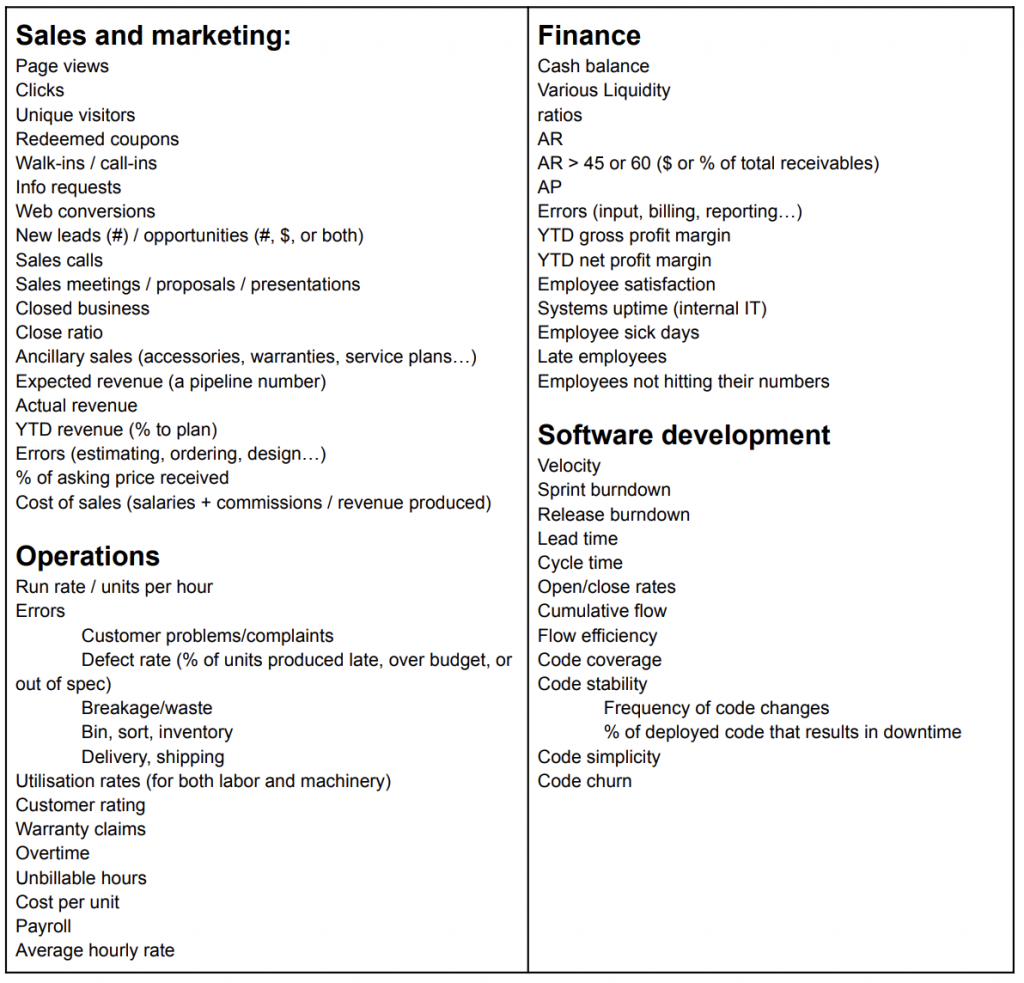When your company is just starting out, there’s a good chance you’re acutely aware of most of the things going on inside of it. The team is still small, and the focus is often on creating a great product, whether that’s a game, a platform or a supporting service.
When you start growing, it becomes harder and harder to keep your finger on the pulse of the company. The team is becoming larger, with more people covering a wider scope of activities. You might be running multiple projects in paralel, or in addition to your regular operations. Your company is becoming increasingly complex, making it more difficult to know what is going on, and who is working on what. If someone were to ask you, simply, “how is the company doing right now”, you might not even be able to answer with any kind of certainty.
One of the ways you can make it easier to keep a pulse on your company is to create a company scorecard.
Why should you use a company scorecard?
There are many versions of a scorecard, and in this case I’m talking about the version that is used in the EOS method by Gino Wickman.
His version of a company scorecard is simply a list of 5 to 15 leading indicators of your company’s overall health, that you review with your management team each week. Ideally, you could be sitting on a beach enjoying a well-earned vacation, receive an email with your weekly numbers, and know EXACTLY where your company stands in that moment. No frantic check-in calls, no reading your email in the evenings. Just a glance at your scorecard, and you can relax knowing that either your company is in a good place, or that something requires attention and that your colleagues are already aware of this. Back you go to sipping your piña colada.* **
Sounds pretty good, right?
Of course, this scenario requires that your scorecard shows the right indicators. Let’s dive into how to create your own, using the indicators that are right for your company.
Creating your company’s scorecard
Get your team together
It’s important to put your scorecard together with the rest of your (management) team. You want to get a full list of the things that determine your company health, so you need a broad perspective.
Write down any indicators you’d like to track
Have everyone write down 5 to 15 leading indicators that together show your company’s overall health. Keep in mind that these should be leading indicators instead of lagging indicators. For example, “New clients” is a lagging indicator which, depending on your business, is likely preceded by one or more of the following:
- Proposal presentation
- Proposals created and sent
- Needs assessment
- First meeting
- First contact
- Targets added to target list
In this case “Targets added to target list” is your most leading indicator, and allows you to intervene at the earliest point in the process if you’re off target.
Check out this list of often used KPIs for more examples of what you could use for your own scorecard:

Combine and prune
Combine everyone’s lists into a single big list, and ask the following three questions for each potential indicator:
- Do we want to see this number each week?
- Does it make sense to collect and review this number on a weekly basis?
- Can we get the data each week?
Keep pruning and tweaking until you have your final list of 5-15 indicators
Set goals
Set goals for where you want each indicator to be on a given week. Don’t worry too much about the exact number, you can tweak these as you get used to hem and hone in on your sweet spot
Assign accountability
For each indicator assign someone on the team who is accountable for reporting on it. It’s not that this person will be solely responsible for keeping the indicator on track. They are simply the person to keep track of it, and the first point of contact if any questions or issues arise.
Track progress
You want to keep track of about 13 weeks, so that it is easier to spot trends. Report on the numbers each week, and make adjustments to your indicators or goals as you finetune your scorecard. Your final scorecard will look something like this:

By reviewing these numbers every week and tweaking where necessary, you’ll be in a strong position to actively keep your company health on track.
Good luck making your own scorecard! If you want to make it even easier, grab the printable templates by filling in your email below.
* If this still makes you want to jump on a call, you might have some trust issues with your team. There are ways to overcome this that will improve your cooperation and overall results. The Five Dysfunctions Of A Team is good starting point.
** Or a virgin strawberry daiquiri, or whatever floats your boat. You get the point.
Photo by Element5 Digital on Unsplash

